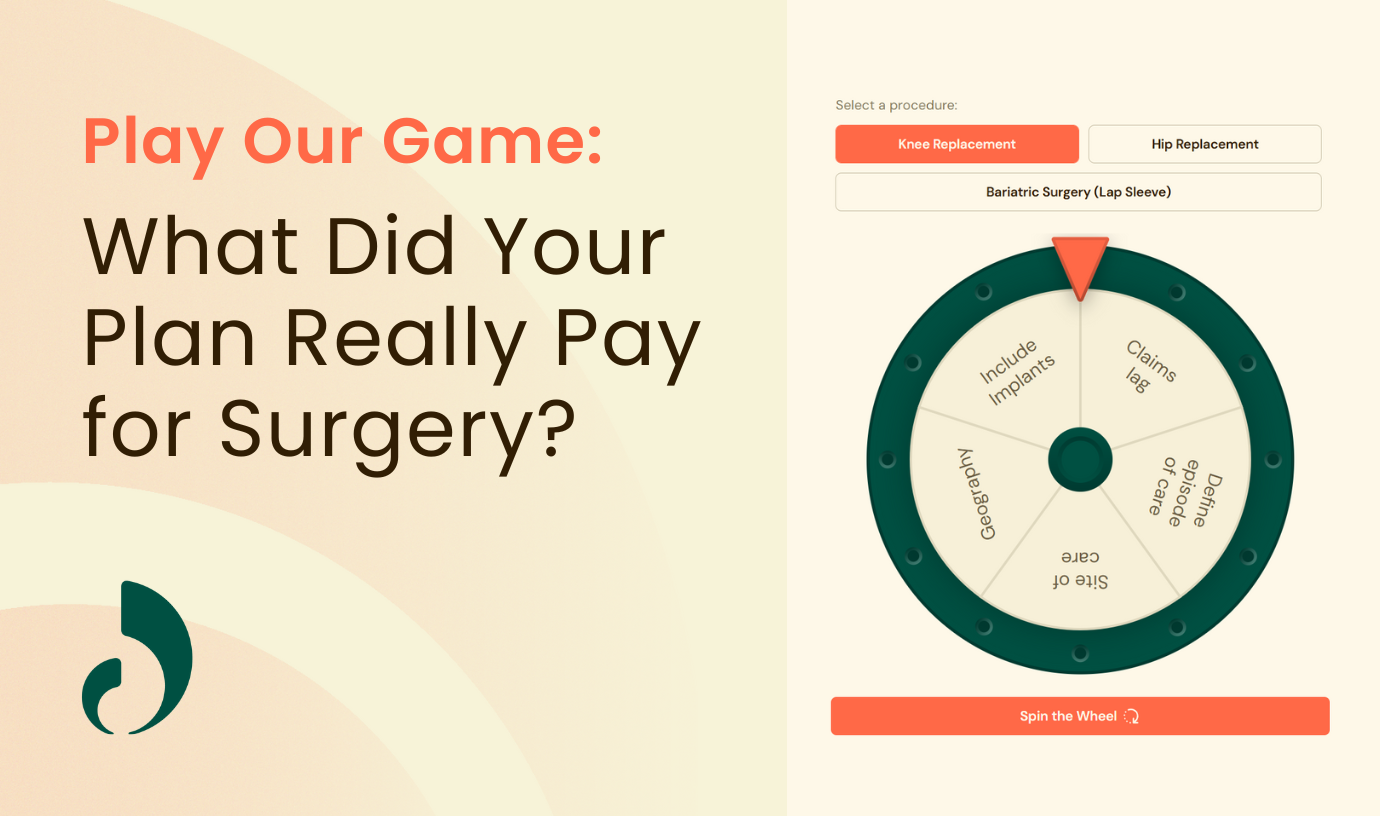In a recent episode of the THCB Spotlights podcast, Lantern CEO John Zutter joined Matthew Holt, founder and publisher of The Health Care Blog, to explain the company’s pivot from focusing exclusively on surgery care to becoming the largest specialty care platform in the U.S. The conversation also covers how the model saves money for employers and their workers, and provides key insights on the evolution of the market.
Can you tell us about your recent name change and rebranding?
Zutter: We realized the path to success in the specialty network and Centers of Excellence space is being able to drive utilization and engagement, and to do so, you needed to cover more things for more people in more places and have a geographic access that was convenient for the ultimate membership.
To solve that problem, we needed to figure out how to assess excellent-quality doctors, surgeons and other specialists, as well as the facility and the anesthesia providers, so that you could cherry pick on a more geographically distributed basis. And that really became the foundation for our separation from some of our peers in the category.
Centers of Excellence have been around for a long time, but they haven’t always been successful. A big part of that is because of a narrower scope and lack of access. We try to solve those two problems with more geographic distribution. From more geographic distribution, you can cover more things because you don’t have to amortize the cost of travel as much, so you can go lower in the acuity continuum. And that created the foundation for our growth to be able to work with both nationally distributed employers, but also more geographically concentrated ones.
Today, we have the largest network in the specialty care space for surgery with about 600-ish locations where we can send people to both ambulatory surgery hospitals in the community and national institutes.
And then over the last two years, we really started getting into product expansion. We launched our cancer product about 18 months ago and then announced our launch into the infusion space, both at home and on the ambulatory side. So, with that rebranding, we went from being a narrowly focused surgical center of excellence to a specialty care platform.
What problem are you fundamentally solving that employers can’t solve with their health plans?
Zutter: The three areas we’re in—surgery, cancer and infusions—represent almost 50% of the cost of healthcare. They tend to grow about 15% per year, and so when overall healthcare is growing at about 8% and half of its growing 15%, that means the majority of the growth is coming from our categories.
So, one, you’ve got a growth in inflation problem. Second, there’s variability in costs and quality. You put out a piece earlier this year talking about “So what can we do about health care costs?” and you had four different assertions, right? One of which was “Can you do things for less price? Can you shift from a high cost to a more efficient one?” That’s the problem we’re solving and that’s what we’re executing against.
What sort of employers have these conversations with you? What share of the market could you get to, and of that share of the market, how much are using Lantern or someone like you?
Zutter: According to the Business Group on Health, about three quarters of employers would put centers of excellence in their top three priorities for this coming year, so there’s a broad focus on it. There’s also a little bit of solution category debt in that it hasn’t historically always worked.
There’s a range of employers out there. In terms of how prescriptive, how progressive or aggressive they might get with respect to their solution design, that’s definitely changing. In our book of business in 2018, we had one client who mandated the use of the network for a particular procedure category. This year it’s over 50% of clients, which is a significant change in behavior.
When you see 50-plus percent of clients across industries deploying more prescriptive strategies right out of the gate, I think what you take away is we’re at a breaking point where a number of the historical levers that employers in the ASO (Administrative Services Only) market tried to pull, they’re just depleted at this point. There’s no more risk transfer to the members.
I think one of the few things that does work is if I can have a procedure done at 50% to 60% lower unit costs and do it with materially higher quality standards, that’s immediate ROI every single time those engagements happen. And so, forgive the play on words, it’s a very surgical approach in that it’s a very small percent of people that use these services, but they drive the majority of the money.
Some companies offer primary care in-house and try to manage the network effect. But you probably still end up with the same approach, which is you have to manage that specialty care spend and get people to the higher-quality, lower-cost plans.
Zutter: There’s definitely this thought process, and it’s been around for a number of years, that if you go upstream, you solve downstream. And so, the upstream being you offer primary care for the general health and wellbeing of your population, and then you reap the dividends over time.
Our most successful client is a Fortune 500 mining business in the western part of the country in a very remote and rural environment. They use onsite and nearsite clinics to deliver primary care for over 60% of their population. We work very closely with those clinics and we’re the downstream recipient of the steerage from those clinics, and they do 10-x the utilization of an otherwise normal client.
When you have a concentration of population, those things work really well. When you have fragmentation, it becomes really hard to scale. We have large retailers that work with us, and it’d be very hard for them to deploy that strategy. They’ve tried to put primary care into the CVSs of the world and it hasn’t caught on as much as we’d like it to. I think a lot of employers are saying that’s a philosophically appropriate approach, but the practically efficacious one today is for steerage on the few things that really drive results.
Let’s talk about Lantern. From the employer and employee perspective, what actually happens?
Zutter: Let me give you two examples. One would be the optional incentivized, carrot-based model, and one would be the more prescriptive, steerage model.
For most of our clients, they try to drive engagement by waiving deductibles, waiving co-insurance, providing cash rewards or HSA rewards. So, there’s a financial incentive to change behavior. Every employee that signs up during open enrollment automatically receives our benefits. They receive an ID card from their primary insurance and also receive an ID card from Lantern. That’s both for operational purposes and also a reminder that when they have those needs, they have that service. The member also receives communications from us throughout the year on a programmatic basis.
A member may call us and say, “I was told I need surgery, can you help me with that?” At this point, we’re going to identify a doctor bespoke to your needs in your community, or as close as possible. And then we’re going to give you concierge care through that journey. We’re going to explain to you how we choose doctors, explain the costs, explain your choices, explain the benefits from both a financial and experience perspective, help you transfer medical records, help you book appointments and check in on you before and after to make sure it went okay.
In the mandatory model, the only difference would be that for select categories of care, which would typically be the most common, like bariatrics, joints or spine, the employer turns off the network through their primary administrator and makes us the exclusive network. So, when that member needs to engage for a knee replacement, we’re the only in-network solution, which means we’ll capture near 100% utilization.
This is an important differentiator between us and traditional centers of excellence. Most are just joints, spine, bariatric and cardiothoracic procedures, and that’s the lion’s share of what they do. We cover basically all plannable and medically necessary procedures. So, GYN, hernias and GI procedures. We even do things like colonoscopies and ENT, so septoplasty and eustachian tubes, things of that nature. Those will always be optional, but with the big-ticket items, employers can determine if they’re mandatory or not. Obviously, the utilization results will come more or less depending on that design.
Do you also try to help members avoid surgeries?
Zutter: A 100% avoidance of surgery is the highest-value thing we can do. The majority of our clients in fact pay us on a percent-of-savings basis and there’s no greater savings than not having an unnecessary procedure in the first place. So, we’re incentivized for that. Our clients are incentivized for that. We tend to see north of 30% surgical avoidance when we’re the second opinion.
How does avoidance work?
Zutter: When we take credit for an avoided procedure, it’s only when we provide the second opinion and you’ve already seen a specialist who indicated you need the procedure. Then you see our doctor, and he or she says, “No, you’re not appropriate. You’re too high risk. That’s not the right surgical intervention. You should do physical therapy.”
So, how do we make sure we’re doing appropriate care? We have a very rigorous provider selection process that doesn’t just look at your training and it doesn’t just look at your outcomes. It also looks at your protocols for appropriateness. We go above and beyond in the selection criteria and the ongoing monitoring of our doctors around their protocols for surgical optimization and surgical avoidance. At the end of the day, that’s the most important thing.
How does it work when you determine physical therapy might be a better fit for a member?
Zutter: Our care advocates are trained to help steer within their ecosystem or within their network as well. We partner with a number of leaders in that space. We partner closely with Hinge Health and SWORD, and we can steer to those providers when possible. If not, we’ll steer to a local physical therapy provider within the network to make sure the member gets the care they really need. That’s a core tenent of our concierge services, to make sure we’re helping the patient with their needs.
To view the complete interview with Lantern CEO John Zutter, check out the full episode on the Health Care Blog podcast.




